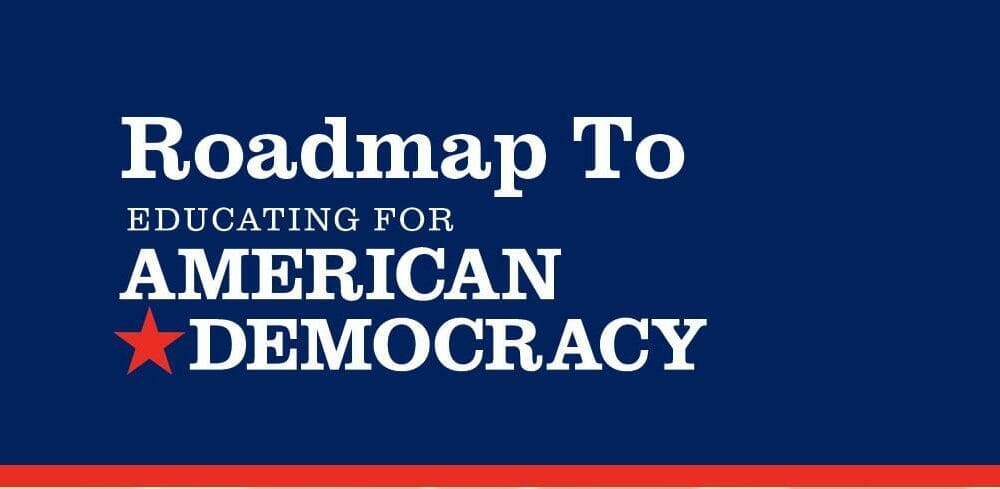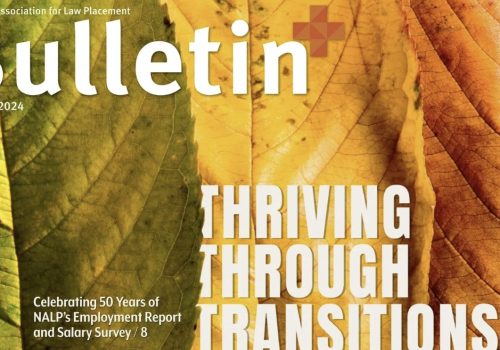A Roadmap for Building Excellence in Civic and History Education for All K-12 Students

Share this Article
“A self-governing people must constantly attend to historical and civic education: to the process by which the rising generation owns the past, takes the helm, and charts a course toward the future.”
The March 2 release of the Roadmap for Educating for American Democracy represents an exciting and necessary step toward building excellence in civic and history education for all K-12 students―a step that Street Law is thrilled to be a part of.
The Roadmap presents state education leaders, school administrators, and teachers with a tool to guide the shift of content and instruction about history and civics from breadth to depth. It offers a framework that urges and inspires students to learn through inquiry.
The Roadmap and accompanying report were developed by Educating for American Democracy, a consortium led by iCivics, Harvard University, Tufts University, CIRCLE, and Arizona State University. The Roadmap is the brainchild of a diverse group of a more than 300 academics, historians, political scientists, K–12 educators, district and state administrators, civics providers, students, and others from across the country. It represents many months of hard work, discussion, and reflection, and Street Law applauds all who led and contributed to this endeavor.
To commemorate its launch, we chatted with three experts about the Roadmap and the impact it could have on the civics and history education landscape in the United States: Peter Levine, Cathy Ruffing, and Ashok Regmi.
 Peter Levine was a Principal Investigator on the Educating for American Democracy Roadmap and Report. He is the Lincoln Filene Professor of Citizenship and Public Affairs, Jonathan M. Tisch College at Tufts University and serves on the Street Law, Inc. board of directors.
Peter Levine was a Principal Investigator on the Educating for American Democracy Roadmap and Report. He is the Lincoln Filene Professor of Citizenship and Public Affairs, Jonathan M. Tisch College at Tufts University and serves on the Street Law, Inc. board of directors.
What excites you most about the Roadmap?
It is attracting more attention than previous efforts to strengthen civic education. For instance, six former U.S. education secretaries (Lamar Alexander, Arne Duncan, John King, Rod Paige, Richard Riley, and Margaret Spellings) endorsed it in a common statement. I think the public recognizes the urgent need for better civics. Also, a large and philosophically diverse team was able to reach consensus, which is good news—and perhaps surprising—in a time of deep polarization.
Given the current state of affairs, what challenges will the Roadmap help American society begin to address?
American history and civics have been neglected for many decades. The Roadmap should help restore them as priorities. More and better civics will enable a new generation to work better across differences, to understand and address public problems, to respect and improve institutions, and thereby to preserve and strengthen the republic.
What could a change look like from the perspective of a young person?
Every student should actually study American history and civics from kindergarten through high school. Those subjects will get more time and attention. While studying those subjects, students will inquire about deep and significant questions, instead of merely being instructed about long lists of topics that too often fail to cohere.
What values underlie this Roadmap?
The Roadmap reflects a commitment to depth over breadth. It selects seven major “themes” to focus the curriculum. It favors inquiry over the simple acquisition of facts. It integrates a range of perspectives: diverse philosophies of politics and government, several disciplines that have different methods and priorities, and many pedagogical approaches. Instead of merely lumping these ideas and perspectives together or splitting the difference, we worked to turn them into one coherent vision that everyone could genuinely adopt. Thus, the Roadmap reflects and endorses an ideal of deliberation. Finally, the Roadmap calls on many different stakeholders—from the U.S. government and national nonprofits, to state education agencies, to teachers, families, and students—to play important roles. Thus, the Roadmap honors the value of federalism and decentralized governance that is core to American constitutionalism.
What can organizations like Street Law do to best support the field at this time?
Street Law’s programs and materials are already largely aligned with the Roadmap. Street Law is already assisting with the Roadmap’s implementation by providing high-quality professional development. I hope that the Roadmap will support Street Law by strengthening the case for just the kind of work that the organization already does. That said, if Street Law can present its work as consistent with the Roadmap, it will help build momentum for the Roadmap’s larger vision. Also, the details of the Roadmap may provide useful guidance as Street Law continues to produce new materials and programs and revises its existing ones. In particular, I would draw attention to the five “Design Challenges” in the Roadmap. These are “rich dilemmas” that inevitably confront educators in history and civics. We did not promise to solve these challenges but instead wanted to encourage everyone in the field—from classroom teachers to national nonprofits—to continuously address them and build a deeper base of experience and knowledge. Street Law can help by focusing explicitly on those challenges and sharing what it learns.
What did you learn from being part of this process about the complexities of developing such a roadmap?
Some of our disagreements were between people who might identify (in various and unpredictable ways) as conservatives or liberals. More often, the group did not differ along those lines but in other ways. Classroom teachers and university-based scholars, historians and political scientists, and people who focus on young children or teenagers had differences. We tried to reach consensus about as many issues as possible while also intentionally naming the main unresolved issues as “Design Challenges” for everyone in the field to address. Sometimes, issues are unresolved because they reflect tensions and tradeoffs between genuine values. Naming and defining these challenges may be more useful than trying to reach a consensus on what to do about them. That approach worked for us as we wrote the Roadmap and may be applicable in many other cases.
 Cathy Ruffing was a Task Force Member of the Educating for American Democracy Roadmap and Report. A veteran social studies teacher with nearly three decades of classroom experience, she is Street Law’s Senior Director, Teacher Professional Development and Curriculum.
Cathy Ruffing was a Task Force Member of the Educating for American Democracy Roadmap and Report. A veteran social studies teacher with nearly three decades of classroom experience, she is Street Law’s Senior Director, Teacher Professional Development and Curriculum.
What are you hearing from teachers that reinforces the need for the Roadmap?
Teachers recognize the need to amplify student voice in their classrooms to increase engagement. They understand that students will be more engaged when they are involved in answering the questions and challenges presented by the Roadmap. Teachers have been ringing the warning bell about the decline in civics education and civic participation for 50 years. They are probably the least surprised of all Americans by the events of January 6, 2021. Teachers need support in calling attention to the neglect of history and civics education that results from focusing resources (including student time) on STEM only.
Will the Roadmap help teachers overcome any current challenges?
The Roadmap will help teachers overcome the disconnect between the “textbook version” of events and issues and the lived experiences of their students. By using the inquiry method, students will address the driving questions presented in the Roadmap and have the academic freedom to formulate their own questions.
Does the Roadmap present teachers with any new challenges?
The Roadmap will present some new challenges to teachers. It acknowledges those dilemmas and explains the five design challenges [1] teachers will encounter:
- Motivating Agency, Sustaining the Republic
- America’s Plural Yet Shared Story
- Simultaneously Celebrating and Critiquing Compromise
- Civic Honesty, Reflective Patriotism
- Balancing the Concrete and the Abstract
This Roadmap is set up as a series of driving and guiding questions in contrast to many curricula that are set up as a list of events or facts and are content driven. This approach might be daunting for teachers who are new to their subject matter. For instance, I was an A.P. Government and law elective teacher. When I look at the history questions, I realize I could not help guide students to answer those questions with my current content knowledge and would need to educate myself. Teachers already have many competing demands on their time, so would need to be afforded time and resources to gear up for this shift.
You participated in the Roadmap development process. How did the team ensure that diverse voices and teacher voices were reflected in the Roadmap?
I served on the Roadmap’s Political Science & Civics Task Force with a very diverse group of educators. There were classroom teachers, university professors, deans, and representatives from civics organizations. Many people, me included, had careers that put them in more than one of those categories. The people on the task force represented organizations from across the political spectrum as well. There was quite a lot of disagreement and discussion about the approach, format, and correct terminology. It was a long and sometimes even frustrating process to reach consensus on this Roadmap, but it was made stronger by the wealth of viewpoints.
As a former classroom educator and current educator of Street Law teachers, what excites you most about the Roadmap?
It is exciting to use the interactive Roadmap to see how the concepts develop from K through 12 and the integration of history and civics instruction. As teachers, we can sometimes get siloed in our subjects and grade levels. To see how your stretch of the road fits into the larger Roadmap makes you realize how interconnected it all is and how doing your part will work toward educating for American democracy. The Roadmap invites students to use inquiry to find their own answers to some of the fundamental questions posed by our democracy like “What are the opportunities and responsibilities of citizenship and civic agency in the 21st century?” Questions such as these allow students to use their own voice and experience to answer the question for themselves. I’m most excited about the citizens that will emerge as a result of this approach.
Where do Street Law programs, resources, and pedagogies fit into this?
The project is now in its curation phase. I have been working to submit Street Law resources to be linked to specific themes, driving questions, and challenges and added to the Educator Resources collection. Teachers who are looking for resources to help teach using the Roadmap can find resources from many champion organizations and more are being added all the time. The EAD Roadmap has a pedagogy companion that details six core pedagogical principles. Street Law Deliberations and simulations align especially well with the core principle of “Practice of Constitutional Democracy and Student Agency.” In the future, Street Law will be available to provide teacher professional development to help districts and educators match our resources and methods with the themes and design challenges in the Roadmap.
 Ashok Regmi is the Executive Director of Street Law, Inc.
Ashok Regmi is the Executive Director of Street Law, Inc.
What excites you most about the Roadmap?
I am most excited about the Education for American Democracy Report and Roadmap because it comes at a crucial time in our society. The need for the next generation to be informed and get engaged in building back the civic fabric has never been so urgent. The Roadmap clearly outlines the key themes to be integrated into American civics and history education, it expands the principles of comprehensive civic education, and it provides inquiry questions to guide learning across grade groups. The Roadmap is also humble in that it identifies key design challenges to acknowledge and consider as schools roll this out. This is not a one-size-fits-all approach—rather, it is a lens through which we all (schools, government, community groups, and philanthropy) should look when designing civic learning.
Given the current state of affairs, what challenges will the Roadmap help American society begin to address?
This Roadmap comes at a time when America is struggling to make sense of its past and, at the same time, build a future that is both reflective and forward-looking. Our communities are increasingly polarized and trust in systems is declining. We need to ensure that building a strong social fabric is not perceived as a zero-sum game. This requires deep listening, inquiry-based learning, connecting theories with action, spaces to reflect, and asking the right questions. Above all, the next generation—the young people who are sitting in classrooms and community settings today—will shape this century. They need to be our partners in leveraging the plurality of our society as a means to building a more resilient democracy. This Roadmap, through its themes and inquiry questions, aspires to build a citizenry that is comfortable in civil disagreements and works to build civic friendships across differences. [2]
Where does Street Law fit into this?
Street Law’s approaches, methodologies, and programs align very well with the Roadmap. For the last 50 years, we have leveraged the power of civic knowledge so that young people can see issues from different perspectives, find agency, understand how our legal, government, and educational systems work, and hold those systems accountable. Our learner-centered pedagogy and inquiry-based education materials could be valuable resources to educators in implementing the Roadmap. Our teacher professional development programs are well-suited to help teachers navigate the complexities presented in the report’s design challenges. Street Law stands ready to partner with school districts and state education departments to provide both teacher training and curricular materials in support of implementing the Roadmap.
Where do you see opportunities for civic education organizations to support the field?
Comprehensive, impactful, and reflective civic learning has to be a collective work. No single organization, school, or entity can solve it alone. As a sector, we need to galvanize around the key tenets that underpin this report. I must congratulate Louise Dubé of iCivics who led the Steering Committee. This report was a result of the work of hundreds of ideologically, philosophically, and demographically diverse historians, political scientists, and educators. [3] This makes me optimistic that people will find common ground in the Roadmap. I would venture to say that all disciplines can benefit from inquiry-based, reflective learning, not just civics.
What values underlie this Roadmap?
As I read the report and the Roadmap, I reflected upon the underlying patterns. Within the documents, there was a quest to look at the big picture of how an entire generation of young people enters into adulthood. We must help build a generation that is equipped to reflect; understands the past; has the knowledge, skills, and agency to navigate a rapidly changing world; sees itself as part of a global narrative; and is constantly curious to find common ground. Yes, it is a tall order, but our times require us to think big and differently.
[1] Educating for American Democracy (EAD), “Educating for American Democracy: Excellence in History and Civics for All Learners,” page 17, iCivics, March 2, 2021, www.educatingforamericandemocracy.org.
[2] Page 17.
[3] Page 28.
Image: Cover from the Roadmap to Educating for American Democracy






